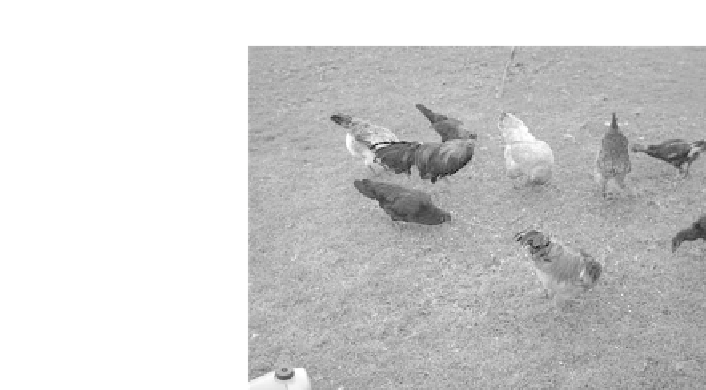Agriculture Reference
In-Depth Information
Figure
1.28.
Chickens on A´da and Octavio's farm.
for two or three persons to do planting and weeding as needed. The only time more
labor is needed is in the harvest of crops such as potatoes. The weight of the harvest
makes transport difficult, and several people must help sort and carry the harvest.
1.2.3 Farm Animals
Octavio is in charge of the livestock, and all of the farm animals are kept near the house.
This helps in their daily care so that A´da and the children can do the chores when
Octavio is away working. When he is at home, he spends most of his time working
on the cages for rabbits, chickens (Fig. 1.28), and guinea pigs. His biggest project so
far has been the construction of another building for the pigs. When he has time, he
also works on improvements on the storage building for tools and equipment.
A´da and Octavio have started the construction of 6 pig pens. Octavio designed the
pens and has done all the construction of the floors and walls for the pens and only lacks
metal sheets for the roof to be complete. In spite of the lack of a finished roof, he has
moved the pigs from an old building to the new one. He has plans to change the breed of
pigs you see in Figure 1.29 to a more productive breed, but that takes money.
1.2.4 Farm Income
The crops and animals produced on the farm have two purposes: to provide food secur-
ity for the family and for cash income. The farm provides most of their daily needs, but
when they have urgent needs, for small amounts of money, they harvest some honey
(Fig. 1.30) and sell it for US$5.00 each liter. More income comes from the sale of
chickens, guinea pigs, rabbits, and pigs.
Every 1 or 2 weeks the family takes farm produce to the supermarket in Pintag. The
market buys mostly vegetables and chickens. The chickens are delivered cleaned and in
plastic sacks ready for sale.








